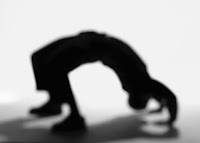Teachers have traditionally used lesson planning to prepare for teaching. Many of the lesson planning approaches lean heavily on a sequential planning process. This process may include components such as:
- the title of the lesson
- the time required to complete the lesson
- a list of materials needed for the lesson
- objectives
- the set up (anticipatory set)
- instructional approaches (often a combination of presentation and guided practice)
- independent practice activities
- assessment
The Backward Design process (Wiggins & McTighe, 2005) places a slightly different spin on lesson planning. Rather than using the objectives to drive the development of the other parts of the lesson, the Backward Design model uses these other components to drive the development of the written objectives. In other words, rather than writing the objectives first, they are written at the end of the process. In the backward design process, the instructor defines the end results of the lesson first. What students should know and be able to do is important but these are defined within the context of what successful products and processes will look like upon completion. Knowing how successful products and processes will look helps to define the assessments that will be used for evaluation. Defining how the products and processes will yield evidence to support how well students demonstrated their learning. This leads to learning activities that can be customized to support students' needs.
Instructional, behavioral, and performance objectives have been around for a long while. Robert Mager has argued for the use of objectives to drive instruction for over thirty-five years. Those in the Performance Improvement and Education fields have known for a long time that objectives serve to focus instruction.
However, these same experts also realize that objectives must be supported by sound instructional and assessment strategies. It is important to realize that objectives will not improve learning by themselves. Merely inserting objectives into a course to meet various general goals (i.e., IE, Quality Matters, departmental, College, etc.) rarely changes instruction. Objectives are only one tool in the lesson planning or design process.
The problem with objective-driven design is that it should have worked by now. With almost 35 years to perfect the system, one would think that almost all public school teachers and higher education faculty would have adopted the system long before now. They have not. Objective-driven design assumes the instructor knows exactly where they are going with their instruction. Working in the real world indicates that this type of planning efficiency is rare. Most instructors have a general idea about the direction of instruction but do not systematically plan a lesson so rigidly that flexibility is lost.
The use of a general direction for instruction fits well with the backward design approach. Instructors define the expected products and processes as the outcome of the course. Working backward from these outcomes, instructors can more easily plan specific activities to support success on these final products and processes.
http://nhlrc.ucla.edu/events/startalkworkshop/readings/backward-design.pdf



